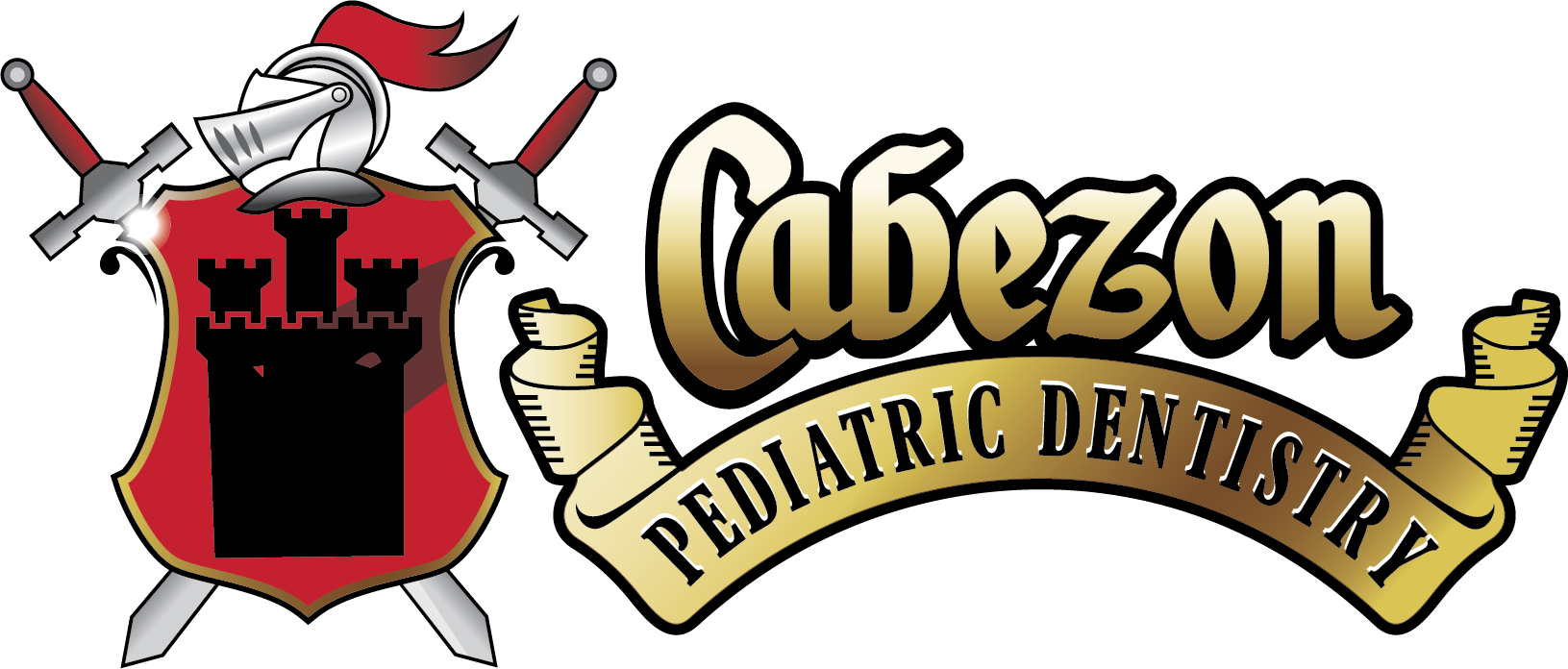We’re always focused on educating parents on the ways that healthy teeth have a positive impact on your child’s well-being. And with February being National Children’s Dental Health Month, we didn’t need an excuse to talk about one of our favorite topics: protecting your child’s teeth!
Our kids need our help learning new things. This is true whether it’s riding a bike, learning how to swim, or learning how to take care of their teeth. That’s where your help comes in!
Protecting your child’s teeth is something that you can help your child learn how to do on their own. And that’s important, because how they treat their baby teeth can affect their permanent teeth, and their oral health throughout their whole lives.
Poor dental health in small children can cause them to lose their teeth prematurely. And losing teeth early could affect the way their adult teeth grow in, causing these teeth to potentially crowd each other.
And when adult teeth get crowded, there’s less room in their mouth for other adult teeth to grow in.
The rival of oral health is tooth decay. Tooth decay is the destruction of tooth enamel caused by a sticky build up of bacteria and food called plaque. There’s more at risk than your child’s teeth when facing tooth decay, as if left untreated it can also cause life-threatening infections.
Tooth decay creates dangerous bacteria in the body, and has been linked to heart disease, cancer and diabetes.
The best bet when it comes to protecting your children’s teeth is to do everything you can to prevent dental and gum problems from happening in the first place.
Keeping up with a dental hygiene routine can help save you time, stress, and money in the future.
Your child’s dental routine should include:
- Brushing twice a day
- Flossing once a day
- Dental check ups twice a year
Start teaching your child how to floss properly and to brush in small circles for 2 minutes at a time starting at age 2.
Get a head start on your child’s dental health with these 5 ways to protect their teeth.
1. Brush Regularly
Brushing regularly helps break up the plaque that causes gum disease and tooth decay, making it the best method to protect your child’s teeth.
Just under 5 minutes of brushing per day can make a difference in your child’s quality of life. They’ll enjoy a beaming, healthy smile, and you’ll enjoy knowing that you’re helping them keep tooth decay at bay.
The prevention process should begin even before first tooth appears in your child by cleaning their gums with a wet rag.
From the sprouting of their first tooth, children should brush their teeth (or tooth) twice a day, for 2 minutes each time.
If your child has much better (or more exciting) things to do than brush their teeth, don’t give up! There are plenty of ways to get creative and make brushing their teeth more fun.
You can play their favorite song while they brush, and have them brush for the duration of the song (just make sure it’s at least two minutes long!). Or allow them a small reward after each brushing, like a toy or a play privilege (just remember, no carbs or sweet treats!).
Be sure your dental hygiene routine is age appropriate in order to avoid things like swallowed toothpaste or using a brush that’s just a little too rough for their developing teeth.
Tips for Brushing Baby Teeth by Age
Birth-6 months
- Clean your baby’s teeth with a wet rag after every feeding.
- Be sure they don’t fall asleep with bottles resting in their mouths, as this can cause bacterial build up.
- Your mouth has bacteria in it that can be harmful to a baby, so be sure to avoid sharing utensils or cleaning bottles and binkies with your mouth.
6 months-18 months
- Once the first tooth pops out, get a soft bristled brush to use.
- Brush the tooth/teeth twice a day, gently and with no toothpaste.
- Just like with infants, avoid contamination from your saliva.
- Check your child’s teeth and gums weekly for any spots or discoloration.
18 months-5 years
- Begin using a pea-sized amount of toothpaste at age 2.
- Teach your child to brush for 2 minutes in gentle circle motions.
The condition of your child’s toothbrush can be just as important as their technique! Old toothbrushes hold on to the same bacteria that they’re trying to fight, and toothbrush bristles can weaken over time, making them less effective.
To avoid any issues with your child’s toothbrush, the general rule of thumb is to replace it every 3-4 months, or whenever you see the bristles begin to bend or lose shape.
2. Snacking Healthy
Sugar and carbs found in candy, pop, and other processed snacks can be your child’s teeth’s worst enemies. The molecules of sugars and carbs react to the bacteria in their mouth, causing a sticky build-up called plaque.
Plaque build-up can quickly cause tooth decay, which can lead to more serious (and expensive) issues like gum disease.
Knowing how different foods affect your child’s teeth enamel can work wonders for their oral hygiene. The enamel of the teeth is the protective layer on the outside of a tooth that helps prevent tooth decay.
There are some foods that can erode your child’s teeth enamel, and others that can actually improve the strength of the enamel.
Bad food for teeth:
- Sodas or other drinks with sugar in them: The combination of acids and sugars in soda is a toxic mixture for teeth, as the acid can erode enamel while the sugar causes plaque build-up.
- Chewy candy and gum: These can stick to the deepest crevices of teeth and be hard to notice or get out, leaving time for the sugars to eat away at the tooth enamel.
- Citrus fruits and juices: Like soda, these have a combination of acidity and sweetness that can be tough on teeth.
- Bread, chips, and pasta: The starches in bread products break down into simple sugars, causing the same plaque buildup of regular sugar.
Good food for teeth:
- Eggs: Eggs contain many teeth-healthy components including protein, vitamin D and phosphates.
- Water: Tap water contains fluoride, which can help strengthen you child’s teeth. Plus, avoiding dehydration can help lower their risk of teeth grinding.
- Dairy products (sugar free): Milk cheese contain phosphates, vitamin D and calcium, all necessary parts of having healthy teeth.
- Broccoli and greens: Like eggs and cheese, broccolis and greens contain a special combination of vitamins and minerals that will benefit your child’s teeth.
- Celery and carrots: Chewing crunchy foods with high fiber helps brush away plaque.
3. Wear a Mouth Guard Doing Sports
As it is, there’s plenty to remember when your child heads out for a game…shin guards, helmet, cleats, water bottle…the list goes on.
One of the top items on that list should be a mouth guard. While it may seem like a pain now, it can save you and your child from being in a lot of dental health trouble in the future.
Mouth guards are special pieces a child places over their teeth that can help cushion an impact and avoid injury.
Just ask the American Dental Association, which says over 200,000 dental injuries have been avoided with mouth guards.
While mouth guards are handy for school sports like lacrosse and football, they can also help prevent dental injuries during other activities like snowboarding, rock climbing, or any other sport or activity in which your child’s mouth is at risk of impact.
4. Sealants
Bacteria collects easily in those hard-to-reach areas in your child’s mouth, especially their molars, which are the teeth located in the very back of the mouth.
Even if your child brushes and flosses every day for 2 minutes a day, their molars are at risk of tooth decay more than the other teeth.
Sealants are a thin protective coating a dentist inserts over the surface of your back teeth (molars) to help prevent cavities in baby teeth and cavities in toddlers. Sealants provide a protective layer where the enamel of the molar is at risk of being damaged, blocking out bacteria, food particles, and the effects of acidity on the enamel.
Sealants are a huge help in protecting your child’s teeth — in fact, they’ve been found to prevent the risk of decay by around 80%!
Sealants can be used on children as soon as their first set of molars break around age 6, and again when their second set breaks around age 12.
Get your child protective sealants from a source you can trust — all Children’s Choice locations offer sealant services by well-trained pediatric dentists.
5. Regular Dentist Visits
Sure, checking your child’s teeth regularly can help you see any spots or other indicators, but in order to have full protection you’ll want to catch any teeth issues before spots develop. That’s where your dentist comes in.
The first dentist visit for toddlers should be within 6 months of their first tooth appearing.
Tooth decay can cause pain for any age, especially little ones. And premature loss of baby teeth can cause tons of future issues like teeth crowding which may make for the need for braces someday.
After their first visit, you’ll want to continue getting your child’s teeth checked at the dentist’s office twice a year.
Getting check-ups can help prevent oral disease and infections better than checking at home.
- Dentists can determine where your oral hygiene process is going well and where you can make improvements.
- The skills and tools of dentists allow them to notice decay or damage better than the naked eye.
- Regular cleanings can help decrease the risk of tooth decay and infections.
Going to an office like one of ours that’s focused on the comfort and health of children is the first step toward making you and your child feel better about the process. We make going to the dentist fun!
Whether they like singing along to their favorite Disney song or picking out special prizes, it’s unlikely your child will notice they’re in a dentist office until someone reveals it to them.
We even offer infant dentist services, especially for your baby and their new teeth.
We offer various children’s dental services and assessments to make sure your children receive the best in pediatric dental care:
- Oral assessments & examinations
- Sealants
- Fluoride treatments
- Restorative dentistry
- Tooth extraction
- and more!
While the time and money it takes to prioritize going to the dentist can seem overwhelming, preventive care is cheaper than the cost of treating gingivitis, or filling a kids cavity because of tooth decay.
We make it easy and affordable for parents and their kids to get the dental treatment and preventative care they deserve. You’re bound to thank yourself when you see your child’s healthy, confident smile. Make an appointment for your child today »

